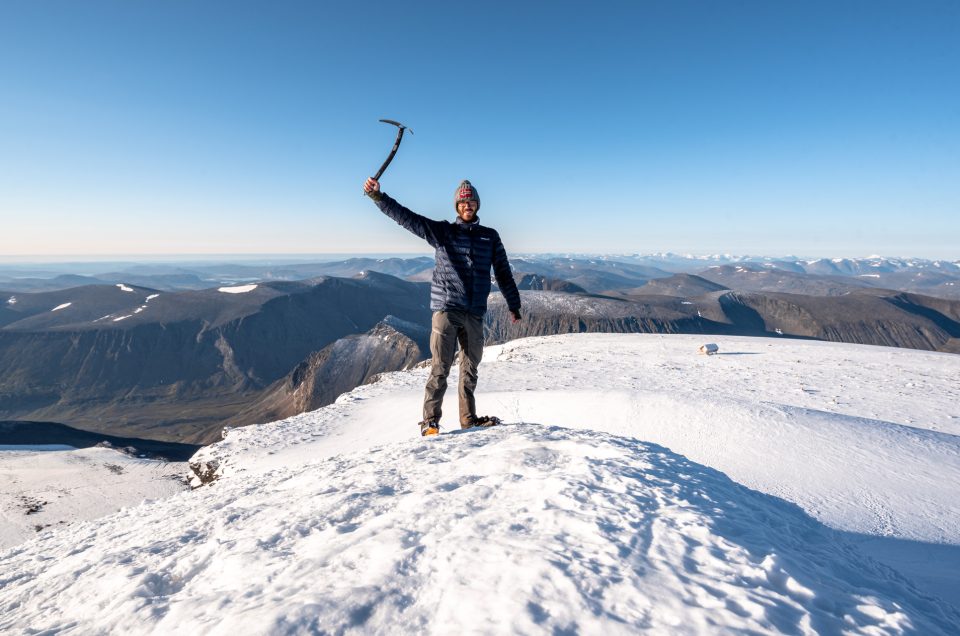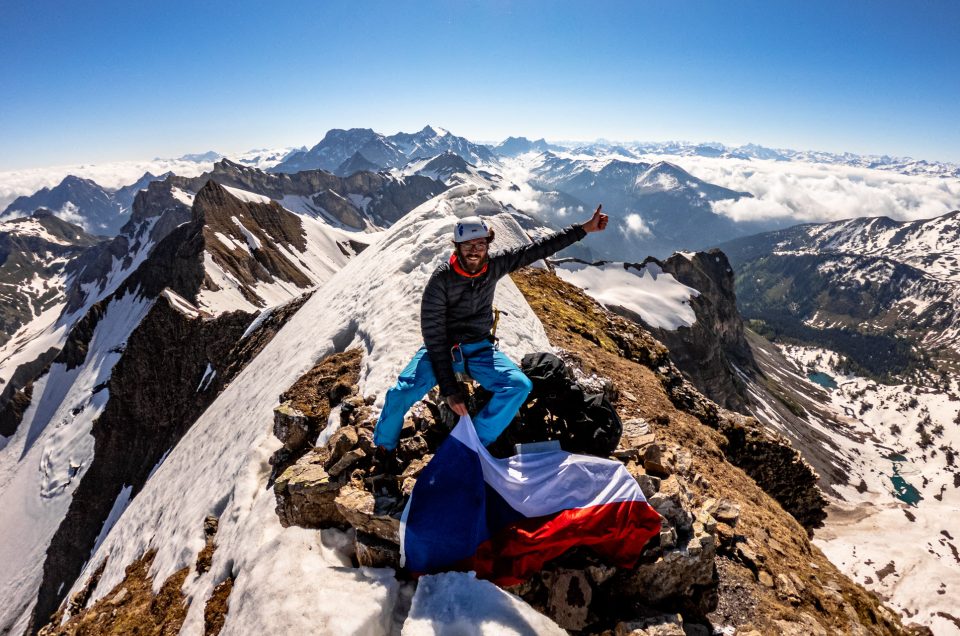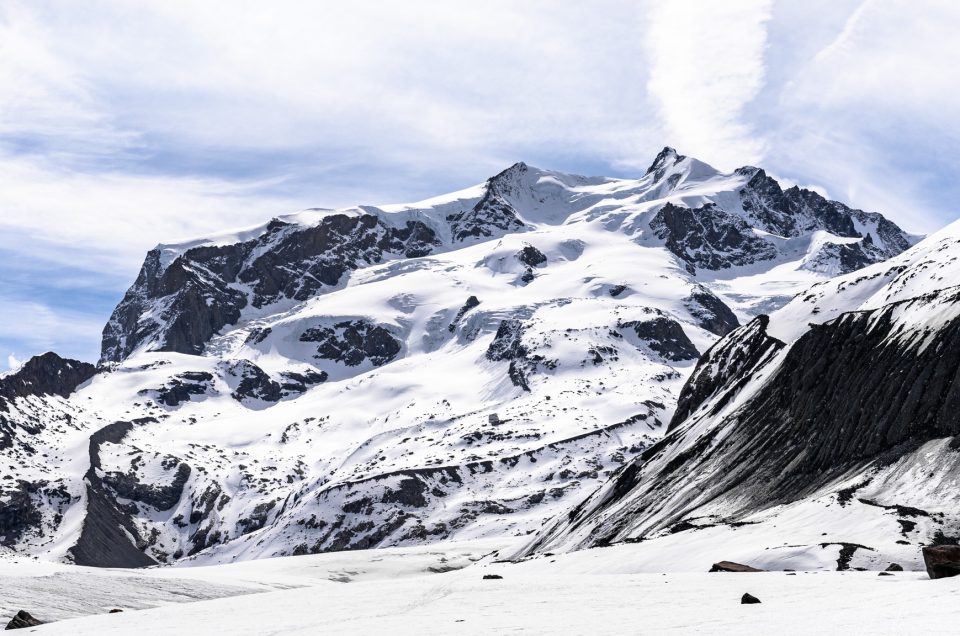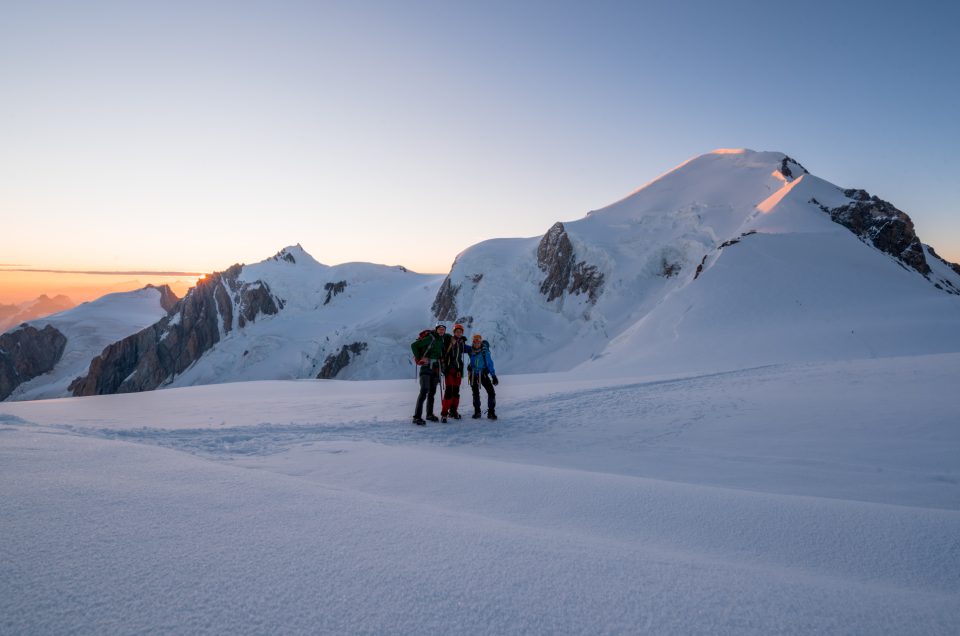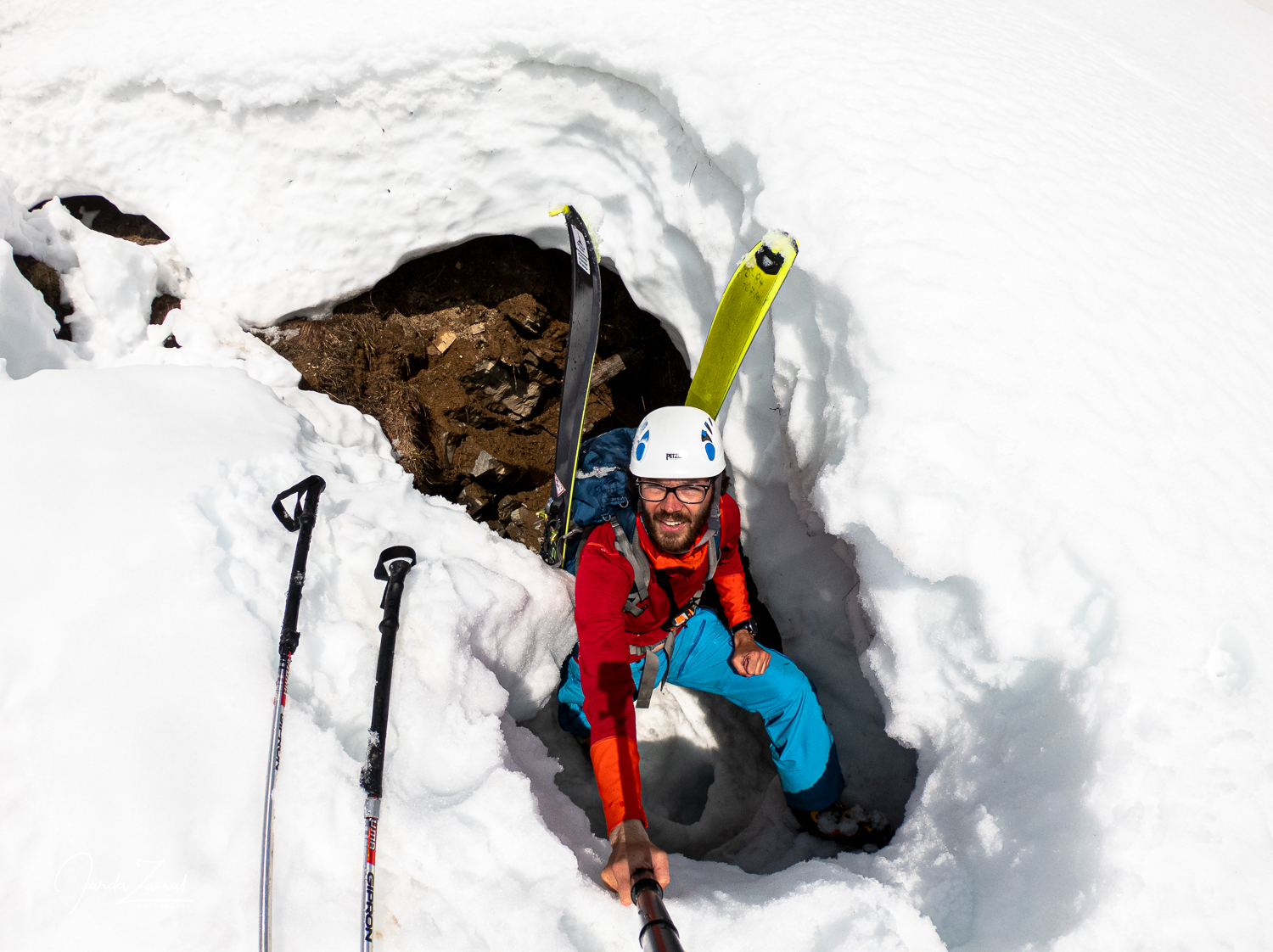Last Updated on July 12, 2024
Sweden’s highest mountain Kebnekaise is unique in the community of the highest peaks of European countries. It is the most remote peak from civilization compared to any other European country’s high point. Since the shortest route from civilization to the summit is 25.5 kilometers long (one way), it can hardly be reached within one day. The easiest way to Kebnekaise is from the village Nikkaluokta and the return trip usually takes three days. In this article, you can read everything you need to know before your own visit of Kebnekaise including practical information, a map and my own experience. Here we go!
Important information for climbing Kebnekaise south
Short description of the ascent: Multiple day hiking and crampons needed at the end of the hike
Essential equipment: Crampons, hiking poles
Best time to visit: July - September or April for winter climb
Fees or restrictions: No but guide strongly recommended on the Eastern route
Camping allowed: Yes
Nearest accommodation/food supply: Kebnekaise fjällstation
Best accommodation at starting points: Cosy huts at Enoks i Láddjujávri in Nikkaluokta or STF Abisko Turiststation
Height of the peak: 2,096 m
Hiking distance DAY 1 and DAY 3: 18.6 km (one way)
Hiking distance DAY 2 - Summit day: 8.5 km (one way)
Time to hike from Kebnekaise fjällstation to Kebnekaise Sydtopp: 4-6 hours up, 2-4 hours down
Time to hike from Kebnekaise fjällstation to Nikkaluokta: 5 hours (one way)
Elevation climbed: 1,599 m (Day 2 - Summit day)
Elevation climbed: 312 m (Day 1)
Water availability on the mountain: Plenty of water sources from rivers up to 1,150 m
Difficulty level: *** (6 stars maximum)
Personal rating of the mountain: ***** (6 stars maximum)
Beer on the peak: Poppels Wit **** (6 stars maximum)
What is the highest peak of Sweden?
Why do I ask such a weird question when I already introduced the name Kebnekaise in the paragraph above? The problem is that Kebnekaise has two peaks – a southern and a northern one. In between, there is a steep ridge. My girlfriend and I climbed the southern peak of Kebnekaise which has always been the highest one. However, global warming is making a change. In 2018 the northern peak became the highest point for the first time in history. The unusual heat in the north of Sweden in recent years caused serious melting of the glacier on the southern peak. I expected I will have to climb the northern peak within my European Peaks project but it got even more complicated. When we were getting soaked by rain every day in the valley (read the story below), it was constantly snowing on Kebnekaise.
According to the local guides at Kebnekaise Fjällstation, it caused an incredible rise of the Southern peak of Kebnekaise by 10 meters! That meant that it became the highest again. I did not believe the number myself, but when I compared my photographs with those taken there in the summer, there was a huge difference. And I was glad. Looking at the steep ridge I didn’t feel like going to the northern peak. In these icy conditions it didn’t look safe at all. It was very windy and slippery at the top and proper climbing equipment including ropes and an ice axe would be necessary.
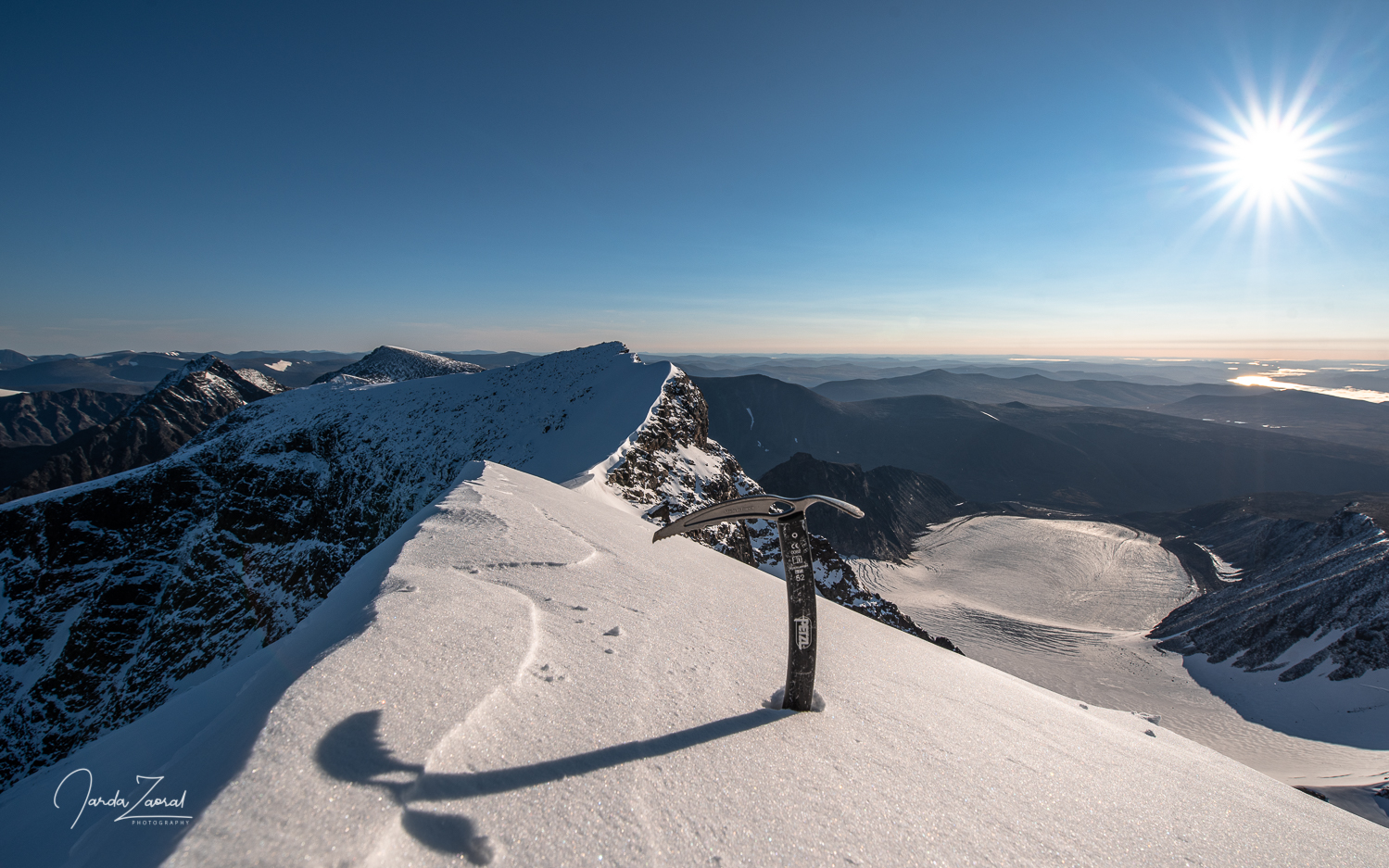
The height of the Southern peak of Kebnekaise is changing dramatically every year so if you want to climb the real highest peak of Sweden, ask at Kebnekaise fjällstation which one is the highest at the moment before your summit push. Or just climb both to make sure you made it!
Below, I will be describing routes to the Kebnekaise south which is climbed most often by visitors. If you would like to climb the Northern peak, climbing experience is necessary as well as proper equipment including an ice axe, ropes and helmets.
Which route is the best to reach Kebnekaise?
There are two popular routes to the top of Kebnekaise. Both of them start at Kebnekaise Fjällstation which travelers usually use as a base camp before the summit. The Western Route (Västra Leden in Swedish) is the most popular way to reach the top. It starts with a steep hike up the mountain Vierranvári. Then, it continues down for ca 200 m to the foot of Kebnekaise. From there, it is again a steep hike up to the top. The route is well-marked and maintained, no scrambling is necessary but it is still a challenging climb that should only be attempted by experienced hikers. The last part of the hike is covered by a glacier which can be very slippery. Crampons are necessary there. Once you are at the top, you will be rewarded with breathtaking views of the surrounding landscape. Below you can find a map from Nikkaluokta to the summit (one way).
The Eastern Route is more difficult than the Western Route, as it involves passing a glacier and a steep climb up a rocky slope to reach the summit. The climb requires proper equipment and experience, as you might have to pass some glacier crevasses and the rocks can be slippery and dangerous. Due to safety, most travelers choose to take a guide on this route. Below you can find a map from Kabnekaise Fjästation to the summit (one way).
How to get to Kebnekaise fjällstation (the base camp)?
The most common and popular way to Kebnekaise fjällstation is to hike from Nikkaluokta. It takes ca 5 hours and it’s the best option if your schedule is tight (see the first map above). However, if you have more time, I highly recommend to extend your experience of the Swedish wilderness and enjoy a part of the famous Kungsleden trail which starts at the village Abisko. The distance between Abisko and Kebnekaise fjällstation is 86.8 km and it usually takes 4-5 days to hike it. See the map below with tips where you can stay over on the way. You can stay both in huts or bring your our tent like we did.
Below you can find my story of climbing Kebnekaise. There, you can find more thorough information. I made it with my girlfriend all the way from Abisko to Nikkaluokta via Kebnekaise. If you are interested only in climbing Kebnekaise via the shortest way from Nikkaluokta, scroll down and skip my Kungsleden description.
My story of climbing Kebnekaise
This climb of Kebnekaise was a part of my project European Peaks during which I climbed the highest point of every European country in a year. Since I had already climbed Kebnekaise four years ago via the regular route “Nikkaluokta – Kebnekaise Fjällstation – Kebnekaise and back” I decided to set out this time for a seven day hike Abisko – Kebnekaise – Nikkaluokta, which meant a seven-day trip through the Swedish wilderness.
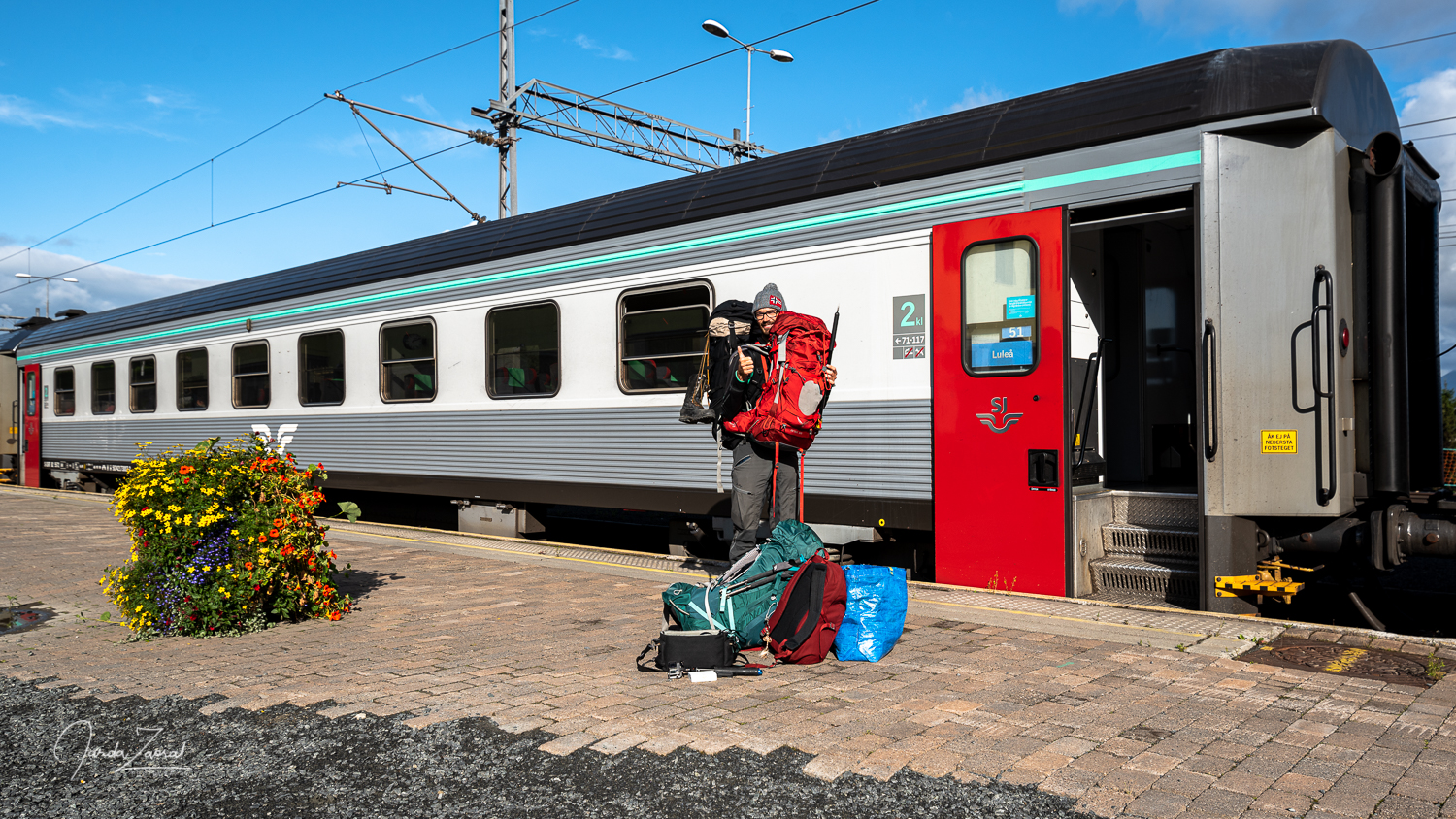
After climbing Halti, the highest point of Finland, my girlfriend and I took the train from Norway to a small Swedish Lapland village called Abisko. There we had to say goodbye to civilization. During the next week we were supposed to be without mobile phone signal on the most interesting part of the famous Swedish hiking trail Kungsleden. We will experience 130 km of hiking.
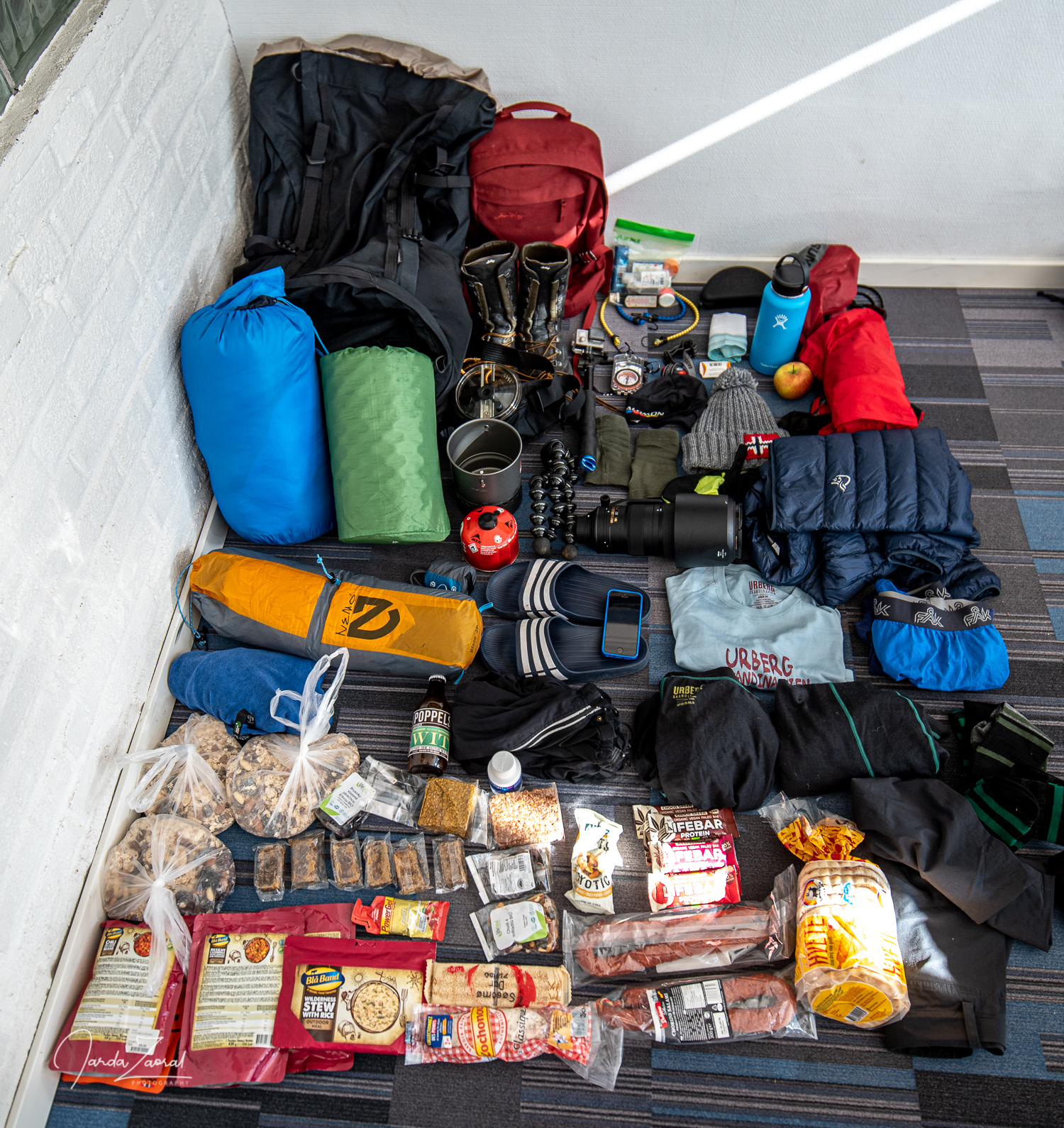
We bought the last food supplies in Abisko, packed our backpacks thoroughly and approached the scale where all pilgrims stop before heading to the Kungsleden trail. My backpack showed a weight of 26 kilograms. Joanne had a backpack weighing six kilos less. The difference was photo equipment (which became lighter after the Scottish accident – my back will thank me). Since we had nothing more to get rid of we set out on the road.
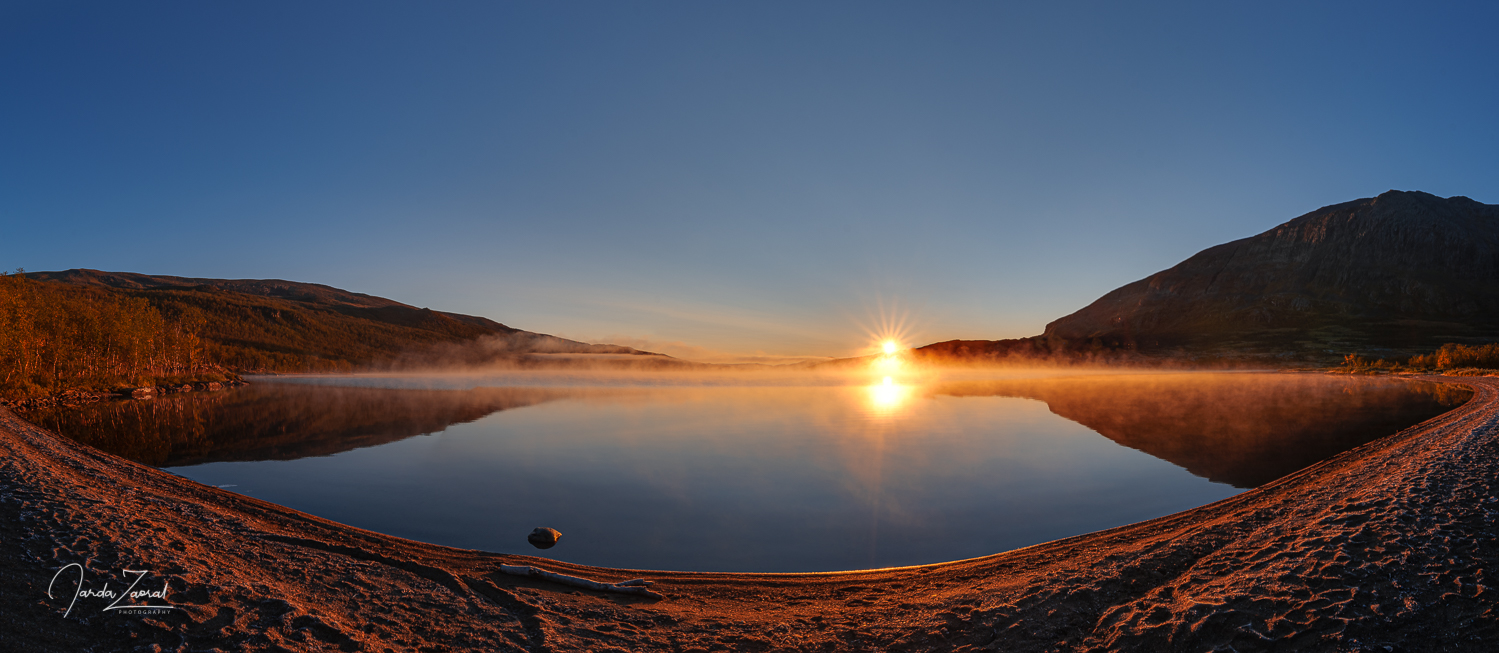
The first five days on Kungsleden trail brought us a lot of experiences. I can summarize them in just seven words: valleys, mountains, rain, lakes, sauna, reindeer and blisters. The hike had it all. A description of the hike would take at least a few more articles so I will just summarize them by a few sentences from my diary:
Kungsleden hike
DAY 1: 2 km
… The sun is shining. We are enjoying the first kilometers on our way along the wild river Abiskojåkka. What a beauty…
DAY 1: 15 km
… The sun is setting. The last mosquitoes of this summer have left their shelters to cheerfully attack the last tourists coming to the first Lapland settlement. My back also hurts. Why did I bring that huge 3 kg lens with me?
DAY 2: 15 km
… Morning cold wakes me up. I want to get out of the tent, but the zipper is frozen. At night the temperature dropped by more than 15 degrees. After I finally managed to open the tent I see a wonderful show. The sun is just rising above a mist above a waveless lake..
DAY 3: 38 km
… We walk through a beautiful deep valley. My back got used to the heavy backpack, so instead of complaining I enjoy the landscape. Along the way I collect and eat the so-called gold of the north – cloudberry. I have never eaten such sweet fruit. Delicasy. On the way we will meet several reindeer…
DAY 3: 49 km
… We walk through another incredibly long valley. Haven’t we already gone through this one? My legs are getting tired and a strong wind blows from the mountains. It brings dark clouds and it starts to rain. It is tough with my heavy backpack. We stop at the first cottage in another Lapland village. But it is full. “You can’t stay,” we are told. The next village is 10 kilometers away…
DAY 3: 59 km
… We are slow. Joanne and I are low-spirited. It’s raining cats and dogs. After two endless hours in heavy rain we reach our destination. We knock the door of the village commander: “Can we stay here for tonight, please?” – “I am sorry. It’s full. The only option is to sleep on the ground,” we hear. We lie down in the corner of the room on a borrowed mattress where dogs usually sleep. But we are finally getting dry…
DAY 4: 62 km
… It is pouring again. Why? What have we done wrong? Why are we punished?
DAY 4: 82 km
… Sauna! There is a sauna in the next village. We don’t hesitate a minute and go there to warm up. Inside, a master is already waiting. Of course, there is no electricity in these Sámi villages so the sauna is heated by wood. It smells really good and the master heats the sauna above hundred degrees. We talk with other hikers about the last days on the trail. The conversation is interrupted by several jumps into a glacial lake. Incredible regeneration and body relaxation…
DAY 5: 105 km
… We passed several waterfalls and walked around steep hills. The weather is beautiful. It is unbelievable how fast a hiking nightmare can turn into an amazing trip. This part of Kungsleden is most beautiful. Soon we see Kebnekaise Fjällstation, the base camp from where we will head to Sweden’s highest point – Kebnekaise the following day…
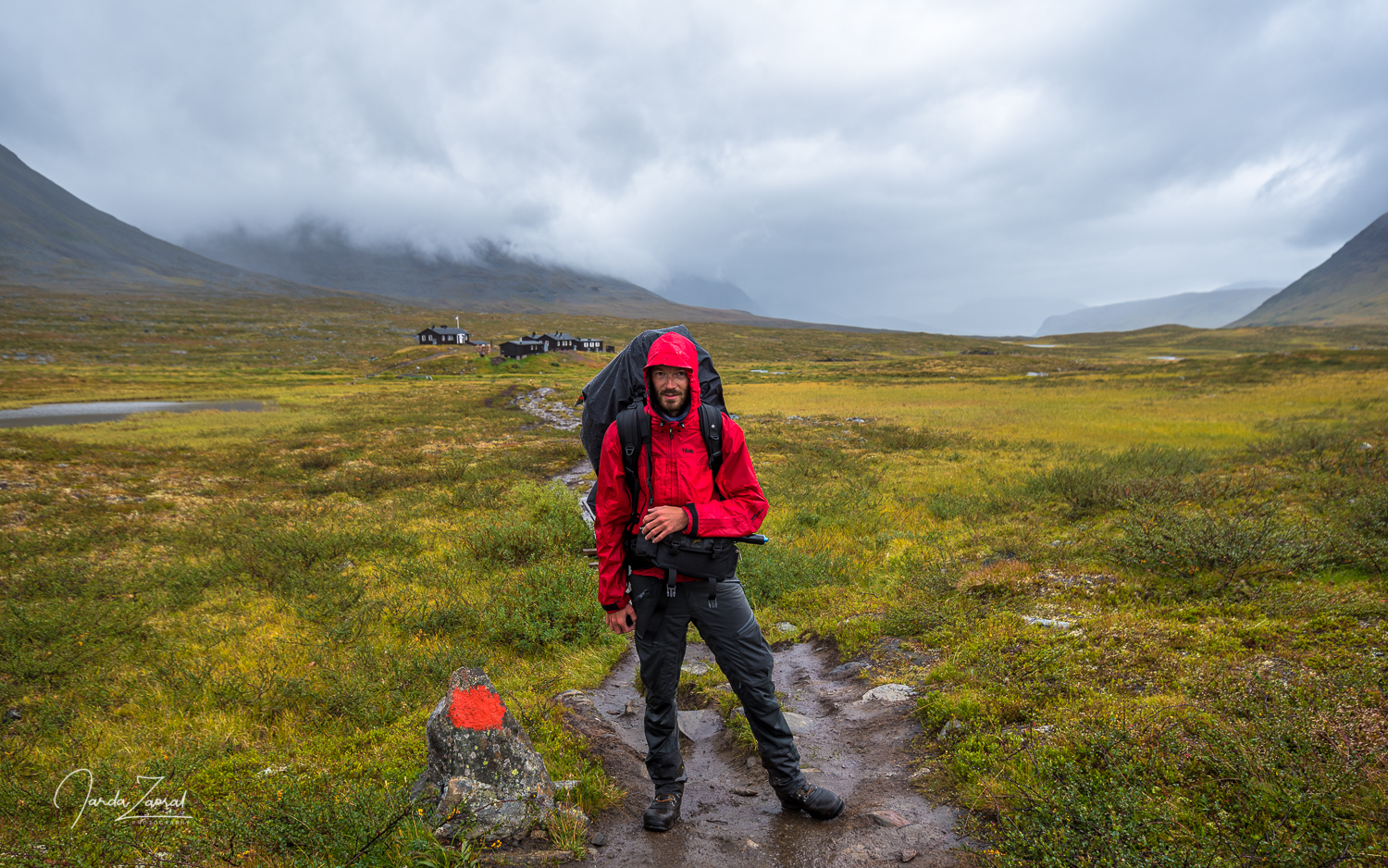
Time to climb Kebnekaise
We set up our tent nearby Kebnekaise Fjällstation when my phone suddenly started vibrating in my pocket. Finally a signal. Welcome back to civilization! After such a long time without a cell phone it was a great feeling. I felt ashamed of how happy I was. We had a beautiful view from our tent but ignored it for a while. Time to let our family and friends know that we are alive. Besides this, we could also check the current weather forecast. It seemed that the bad luck of the last days turned around. The next day was supposed to be a wonderful sunny day. Ideal for our climb of Kebnekaise.
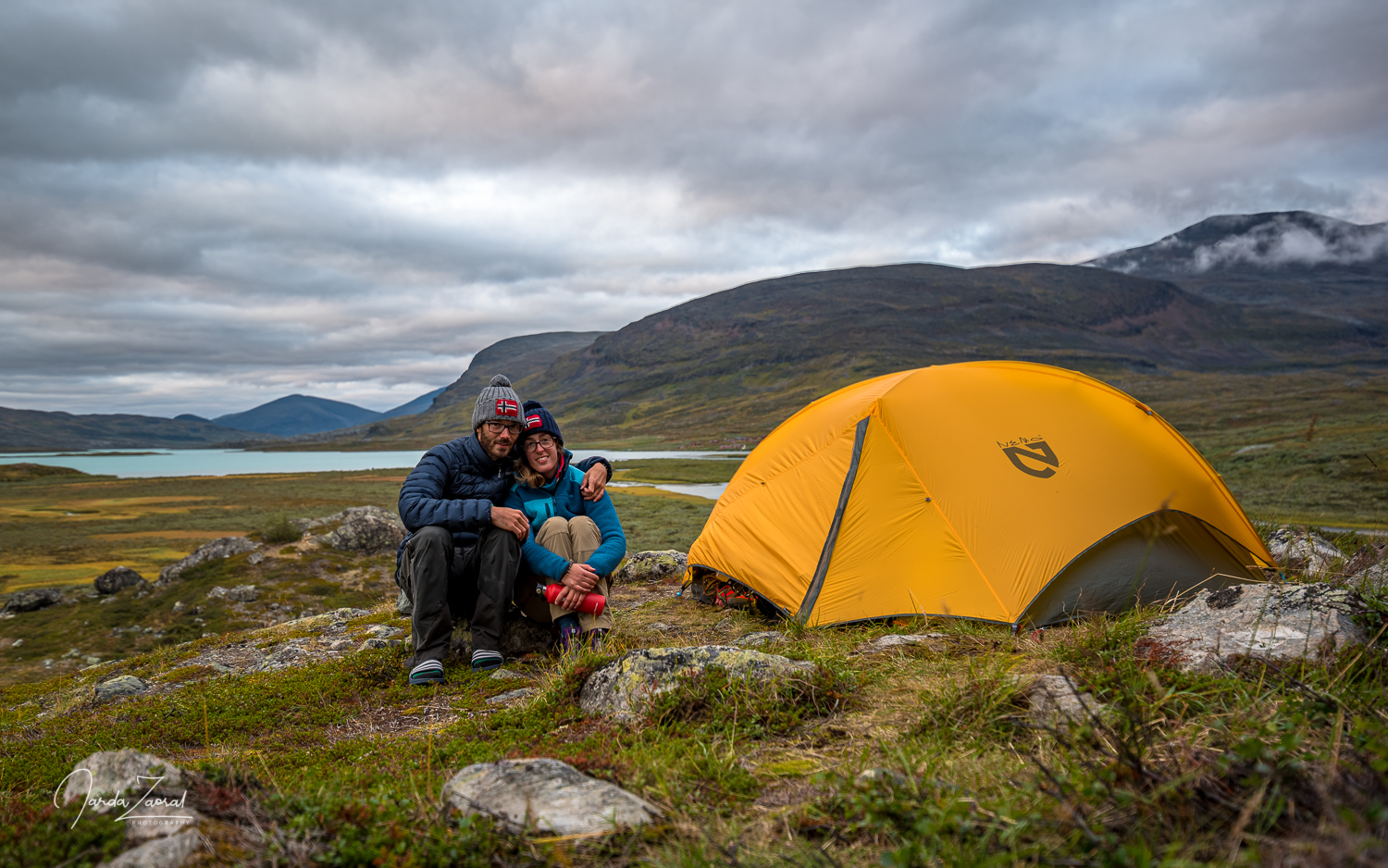
Finally time to climb Kebnekaise
We decided to get up at midnight to reach the summit at sunrise via the western route (the eastern route requires glacier equipment). The alarm was annoying but the view of the northern lights was worth it. We took a short breakfast and started to hike towards Kebnekaise. After the first three kilometers in the valley the path became steeper. In another half an hour we crossed a river and continued on the path recently built by sherpas. A much more pleasant accent than four years ago on rocky terrain.
The Sherpa steps led as far as to the peak of Vierranvárri (1,711 m). It meant that we are only 300 elevation meters from Kebnekaise. However, there was one more valley between Vierranvárri and Kebnekaise. It meant an additional 200 meters down and up.
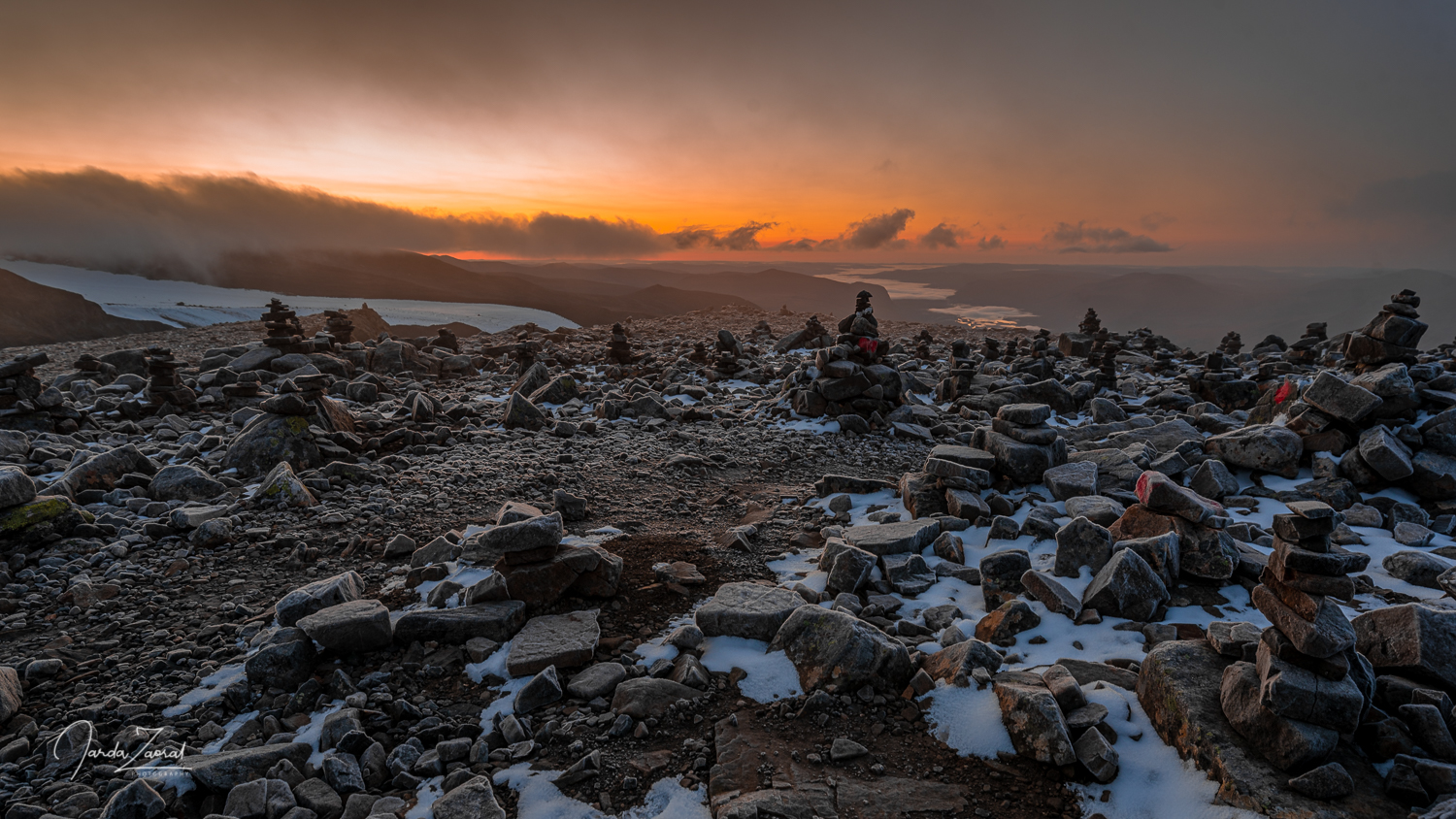
Finally the last climb began. At 1,700 m we crossed the snow line and in a moment the landscape turned completely white. In a few minutes we ascended from autumn to winter! Meanwhile, the sun started to rise and lit the mountains around us with a beautiful pink-red light. Amazing scenery.
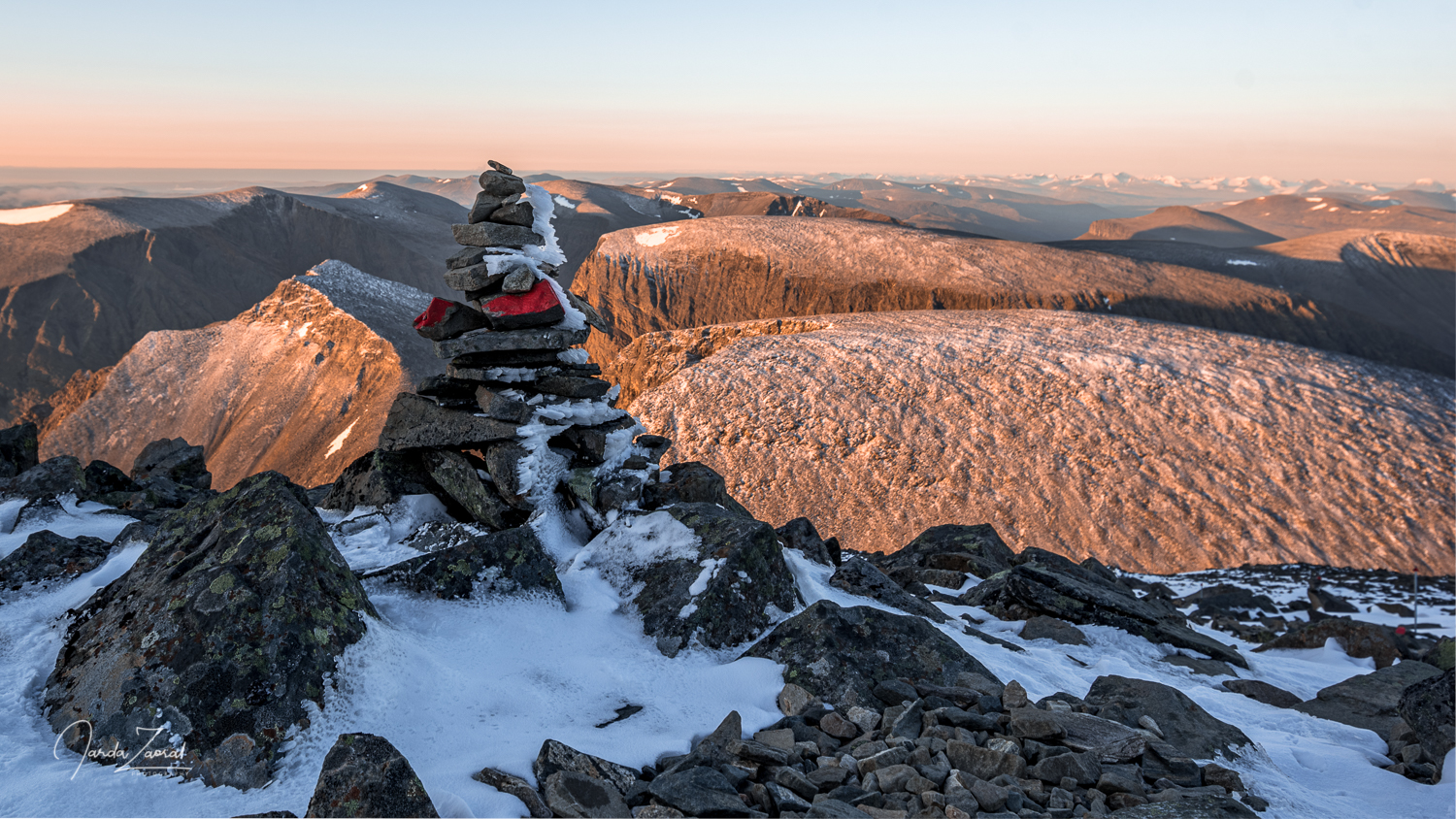
The final 30 meters were very steep and covered by ice, so we put the crampons on. We continued with them smoothly and were on the top in a minute. We admired the snow-capped mountains and the beginning of the red autumn in the valleys. Fog has formed over the lake between Nikkaluokta and Kebnekaise Fjällstation. Beautiful.

If you are exhausted, take a helicopter (warning: pictures of nasty blisters below)
The next day we woke up very tired but there was still the last 19 kilometers to reach the village of Nikkaluokta. We would overcome that we were tired, but Joanne had seriously growing blisters, a result of too tight hiking shoes. They looked very unhealthy. She probably got an infection. “Joanne, do you want to fly back to civilization by helicopter?”
I asked it seriously. Many lazy tourists shorten their way to the top of Kebnekaise and back with a helicopter, and a big demand for this mode of transport made the flight affordable. The flight is relatively cheap compared to other Swedish services (it “only” costs 800 SEK per person; in comparison a night at Kebnekaise Fjällstation costs 1240 SEK – prices in 2018). If you sleep in a tent you can use the saved money for the helicopter.

But my girlfriend refused my offer, “I have done over a hundred kilometers. I want to walk the last nineteen.” It was the toughest part of the whole hike because of the blisters but Joanne managed it well. We arrived to Nikkaluokta after four hours, hitchhiked to Kiruna, and the end of our seven days hike was only pleasant. We ordered a delicious pizza with reindeer meat and watched aurora borealis out of our window at cosy SPiS Hotel where we also got magnificent breakfast with typical buffé full of Swedish food including salmon or meatballs.
My tips for climbing the mountain Kebnekaise:
- If you have time, take the seven-day hike from Abisko via Kungsleden to the Kebnekaise Fjällstation and return to civilization via the village of Nikkaluokta after climbing Kebnekaise. It is an amazing experience. On the way do not forget the sauna.
- Best accommodation at starting points: Cosy huts at Enoks i Láddjujávri in Nikkaluokta or STF Abisko Turiststation
- If you have experience with glaciers, take the eastern route to the summit. You will shorten the hike and avoid significant elevation. Without glacier experience, a guide is mandatory. It is possible to book one beforehand.
- Do not stay overnight at the Kebnekaise Fjällstation. It is overpriced and overcrowded. Bring your tent with you.
Disclosure: Please note that some of the links above may be affiliate links, and I earn a small commission at no additional cost to you, if you make a purchase. I recommend only products and services of companies I use and the income goes to keeping the website running.
